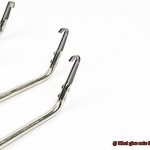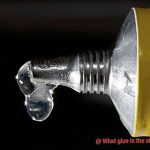Crafting enthusiasts know that finding the perfect adhesive is like discovering a hidden treasure. Whether you’re working on a dazzling decoupage project, assembling a memory-filled scrapbook, or giving an old piece of furniture a fresh lease on life, having the right glue at your fingertips is crucial. Enter glue and Mod Podge – two adhesive powerhouses that often steal the spotlight in creative circles.
But here’s the captivating twist: did you know that Mod Podge is actually a type of glue? Yes, it’s true. While they may seem worlds apart at first glance, these two sticky companions have more in common than meets the eye. If you’re itching to find out which glue is just like Mod Podge, get ready for an enlightening journey into the realm of adhesives.
In this blog post, we’ll uncover the remarkable similarities between glue and Mod Podge, exploring their shared characteristics, versatile applications, and what sets Mod Podge apart from run-of-the-mill adhesives. So grab your craft supplies, unleash your imagination, and let’s embark on this thrilling adhesive adventure together.
Alternative Glues to Mod Podge
Contents
- 1 Alternative Glues to Mod Podge
- 2 Specialty Glues to Consider
- 3 Testing the Alternatives Before Use
- 4 Pros and Cons of Using Alternatives to Mod Podge
- 5 Tips for Choosing the Right Glue for Your Project
- 6 Best Practices When Using an Alternative to Mod Podge
- 7 Common Mistakes When Using a Substitute for Mod Podge
However, there may be times when you need an alternative to Mod Podge, whether due to availability or personal preference. In this article, we will dive into the world of alternative glues that can serve as substitutes for Mod Podge, allowing you to continue your creative endeavors with confidence.
White School Glue (PVA Glue):
A popular alternative to Mod Podge is white school glue, also known as PVA glue. This readily available and affordable option is perfect for a wide range of crafting projects. While it shares similar adhesive properties with Mod Podge, it may not offer the same level of durability and water resistance. Nevertheless, its versatility and accessibility make it a convenient choice.
Decoupage Glue:
Specifically formulated for decoupage projects, decoupage glue provides a strong bond and dries clear, making it an excellent alternative to Mod Podge. It is particularly suitable for adhering paper or fabric onto surfaces. However, bear in mind that decoupage glue may have a slightly different consistency than Mod Podge, so testing it on a small area first is highly recommended.

Epoxy Resin:
For projects requiring a stronger adhesive, epoxy resin can be used as an alternative to Mod Podge. Epoxy resin offers exceptional durability and water resistance, making it ideal for crafts that demand a more robust bond.
However, it is important to note that epoxy resin can be more challenging to work with due to the required mixing process and longer curing time.
Homemade Alternatives:
If you prefer a natural option, homemade alternatives to Mod Podge can be created using easily accessible ingredients. One popular recipe involves mixing equal parts white school glue and water, then adding a few drops of clear varnish or acrylic sealer. This customizable mixture can be enhanced with colorants or glitter to suit your project’s unique requirements.
Specialized Glues:
Crafting often calls for specialized glues that cater to specific techniques. Fabric glue, for example, is designed for adhering fabric to various surfaces, while wood glue excels in woodworking projects. While these glues may not replicate Mod Podge exactly, they can serve as viable alternatives depending on the specific needs of your project.
White Glue
Today, we embark on a journey into the realm of glues, focusing on the ever-versatile white glue.
White glue, also known as school glue or craft glue, is a household staple for many creative individuals. It is a remarkable adhesive that can be used for a wide range of crafting and DIY projects.
Similar to its counterpart Mod Podge, white glue is primarily made of polyvinyl acetate (PVA), a thermoplastic adhesive that dries transparent and provides a robust bond. This means that, in many instances, white glue can serve as an excellent substitute for Mod Podge, allowing you to adhere paper, fabric, and other porous materials to various surfaces. Furthermore, both white glue and Mod Podge can be employed as sealers and finishers, safeguarding the surfaces of your projects.
While white glue shares similarities with Mod Podge, there are distinct differences between the two. While white glue exhibits similar adhesive strength, it may lack the same durability found in Mod Podge. Specifically formulated to withstand wear and tear, Mod Podge shines when longevity is crucial.
Another disparity lies in the finishes available. Mod Podge offers an array of finishes such as matte, glossy, and satin, providing versatility in creating diverse effects on your projects. Conversely, white glue typically dries with a lustrous finish.
When using white glue as an alternative to Mod Podge, consider these essential tips. Apply multiple thin layers and allow each layer to dry completely before adding the next one. This method ensures a smooth and even finish. Additionally, test the white glue on a small area before committing it to your entire project to ensure compatibility with your chosen materials.
Matte Medium
Step into the world of artistic wonder and discover the transformative powers of matte medium. In this captivating exploration, we will delve deep into the realm of this versatile glue, unravelling its secrets and unlocking its potential.
Matte medium, a luminary in the crafting universe, possesses qualities that set it apart from other adhesives. Prepare to be enchanted as we embark on a journey to understand the essence of matte medium and its remarkable abilities.
The Marvelous Similarities:
Adhesive and Sealer: Like its counterpart Mod Podge, matte medium boasts exceptional adhesive properties. With a mere brushstroke, it seamlessly bonds materials such as paper, fabric, and more to a plethora of surfaces. But wait, there’s more. It also serves as a protective shield, sealing your precious creations from the clutches of damage and staining.
The Dazzling Differences:
- Brand vs. Type: Mod Podge, a revered name in the crafting community, showcases its glory through various formulas like Gloss, Satin, and Matte. On the other hand, matte medium represents an entire category of glue available from numerous manufacturers. This vast selection grants you the freedom to explore a kaleidoscope of possibilities.
- Consistency and Application: Picture this – a velvety texture that flows like molten magic across your canvas. That is the beauty of matte medium. Its luscious thickness grants you unparalleled control over your adhesive endeavors. Whether you’re working with weightier materials or seeking to infuse texture and dimension into your artistry, matte medium reigns supreme.
- The Dance of Time: Time is an elusive muse that dances differently for each adhesive. Mod Podge quicksteps its way to drying completion while matte medium indulges in a languid waltz. The leisurely pace of matte medium’s drying process is a boon for artists who seek additional moments of manipulation and blending. Embrace the unhurried rhythm and let your creativity harmonize with the passage of time.
In this enchanting expedition, we have uncovered the mystical allure of matte medium. Its adhesive prowess and sealing powers rival that of Mod Podge, but its unique characteristics make it an extraordinary choice for the discerning artist.
As a type of glue from various manufacturers, matte medium offers you an opulent array of options to suit your creative desires. With its sumptuous consistency and leisurely drying time, it bestows upon you the gift of control and flexibility.
So, whether you embrace the familiarity of Mod Podge or embark on a voyage through the realms of matte medium, both glues will usher you into a world where your imagination knows no bounds.
DIY Glue Mixture
Shake things up with DIY glue mixtures. Why bother making your own glue when you can buy Mod Podge? Well, sometimes you’re in a pinch or want something unique. That’s where DIY glue mixtures come in.
One popular mixture is made with white glue and water. Simply mix equal parts in a bowl and adjust the consistency as desired. It’s that simple.
Feeling adventurous? Try a homemade paste using flour and water. Mix equal parts in a saucepan, cook over low heat until thick, then cool. This versatile adhesive is perfect for any crafting project.
For eco-friendly options, consider a mixture of cornstarch and water. Mix equal parts in a saucepan, heat until thickened, then cool. Ideal for your eco-conscious crafting needs.
Remember, these DIY mixtures may not have the same properties as Mod Podge, so test them out first. The longevity and durability may vary depending on materials used.
Unleash your creativity and give these DIY mixtures a try. Who knows? You might discover a new favorite adhesive that’s uniquely yours. Happy crafting.
In the world of DIY glue mixtures, there are alternatives to Mod Podge that can be used for various crafting projects. One common substitute is a combination of white glue and water. To create this mixture, simply mix equal parts of white glue and water in a bowl or container. The consistency can be adjusted by adding more or less water.
Another popular DIY glue mixture is made using flour and water. This homemade paste is versatile and can be used for various crafting projects. To make this mixture, combine equal parts of flour and water in a saucepan and cook it over low heat until it thickens to a paste-like consistency. Once cooled down, it can be used as an adhesive for paper, fabric, and other materials.
For those who prefer eco-friendly options, a glue mixture using cornstarch and water is a great choice. Mix equal parts of cornstarch and water in a saucepan and heat it over low heat until it thickens. Once cooled down, it can be used as an adhesive for eco-conscious crafting projects.
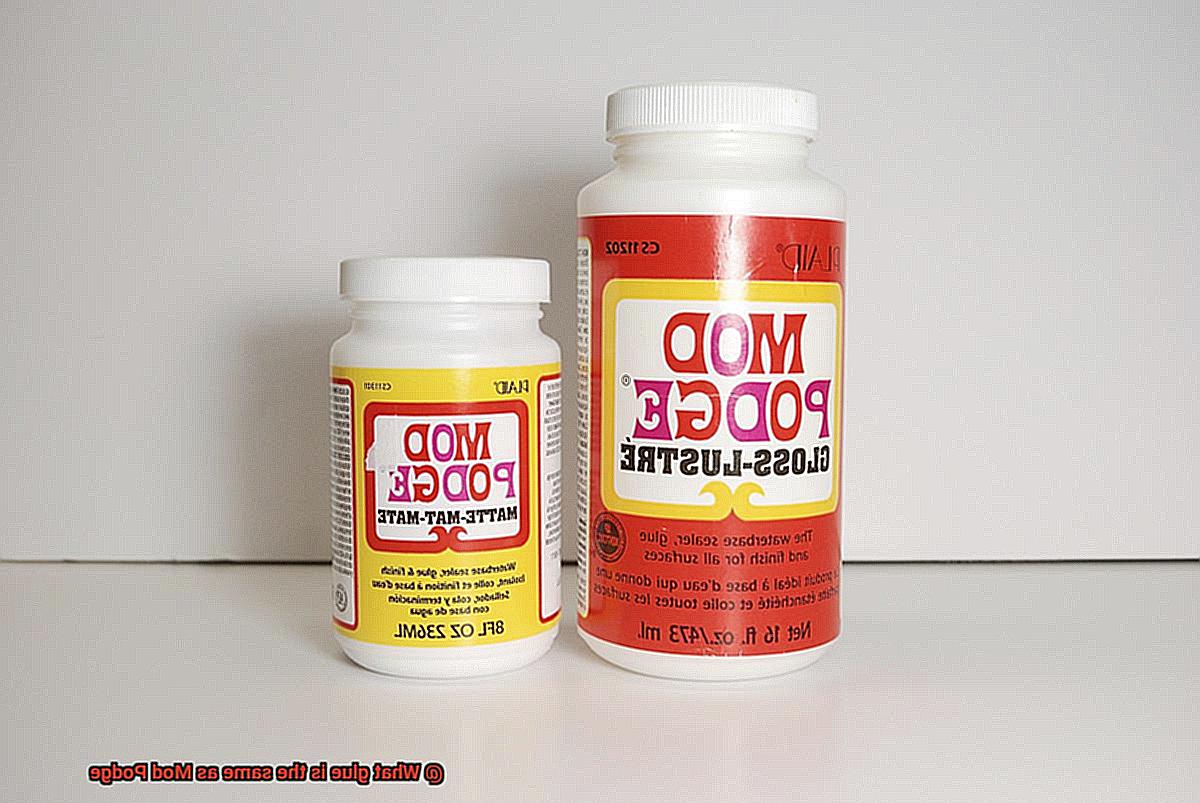
In addition to these DIY glue mixtures, some crafters prefer using a mixture of gel medium and water as a substitute for Mod Podge. Gel medium, when mixed with water, creates a glue-like consistency that is perfect for decoupage and other crafting techniques.
It’s important to note that while these DIY glue mixtures can be effective alternatives to Mod Podge, they may not have the exact same properties or finish. It’s always a good idea to test them out on a small area or scrap material before using them on your actual project. The longevity and durability of these homemade mixtures may also vary depending on the materials and techniques used.
Gel Medium
In this comprehensive guide, we’ll explore the fascinating world of gel medium. From its adhesive power to its ability to create textures and protect artwork, gel medium offers endless possibilities for your creative endeavors. So, let’s dive in and discover why gel medium is a must-have for every artist and crafter.
Adhesive Power:
- Bonding Marvels: Gel medium excels at securely bonding a wide range of materials together, such as paper, fabric, wood, and even plastic. Whether you’re creating collages or mixed media projects, this versatile adhesive will hold everything in place with its unmatched strength.
- Invisible Perfection: Say goodbye to visible adhesive lines. Gel medium dries clear, ensuring that your masterpiece remains unmarred by unsightly marks. Your artwork will shine without any distractions.
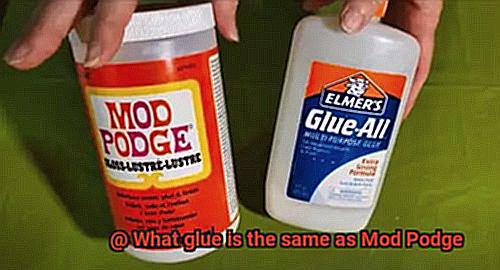
Texture and Dimensionality:
- A World of Possibilities: With gel medium’s different consistencies – from soft gels to heavy gels – you can unleash your imagination and create captivating textures on your artwork. Experiment with brush or palette knife techniques to build raised surfaces and bring your vision to life.
- Customized Brilliance: Mix gel medium with acrylic paints or pigments to create your own customized colors and effects. From subtle hues to vibrant pops of color, gel medium empowers you to express your unique artistic style.
Protection and Preservation:
- Shield Your Masterpieces: Preserve your artwork and shield it from the elements with gel medium’s protective sealant properties. Apply it as a topcoat for a durable layer that guards against moisture, dust, and harmful UV rays. Your creations will withstand the test of time.
- Longevity Guaranteed: The protective seal created by gel medium ensures that your artwork remains vibrant and intact for years to come. Bid farewell to worries about deterioration as your pieces stay protected and cherished.
Choosing the Perfect Gel Medium:
- Drying Time Flexibility: If you relish taking your time to perfect your art, gel medium is your ideal companion. It offers a longer drying time compared to other adhesives like Mod Podge, allowing you to work with thicker layers and experiment freely.
- Fine Art Focus: Gel medium is a go-to choice for artists seeking versatility and texture in their artwork. Its usage is primarily associated with fine art and mixed media projects, where it shines brightest.
- Textures Galore: While gel medium might have fewer variations in terms of finishes, it compensates by providing an extensive range of textures and effects. Let your creativity run wild as you explore the endless possibilities offered by gel medium’s texture options.
Specialty Glues to Consider
Say goodbye to the same old glue and say hello to specialty glues. These unique adhesives offer a range of qualities and features that can give the tried and true Mod Podge a run for its money. Let’s dive into the world of specialty glues and explore some exciting alternatives.
- Matte Medium: For those who prefer a non-glossy finish, matte medium is the way to go. This glue can be used as a glue, sealer, and finisher just like Mod Podge, but with a twist. It dries to a clear, matte finish that adds a subtle effect to your projects. Perfect for surfaces like paper, canvas, or wood, matte medium is also compatible with acrylic paints, making it ideal for mixed media creations.
- Gel Medium: Need something with a little more oomph? Look no further than gel medium. This thicker version of matte medium offers more viscosity and body, making it perfect for collage art or adhering heavier materials like fabric or metal. With different finishes available, including matte, gloss, and semi-gloss, you can choose the effect that suits your project best.
- Fabric Glue: Calling all fabric enthusiasts. Fabric glue is the answer to your adhesive needs. Unlike Mod Podge, which may not adhere well to fabric surfaces, fabric glue is specially formulated for secure fabric bonding. No sewing required. Attach patches, embellishments, or appliques onto garments or create fabric crafts with ease. Most fabric glues are washable and designed to withstand repeated laundering.
- Epoxy Resin: When durability and water resistance are paramount, epoxy resin is the answer. While not as versatile as Mod Podge, epoxy resin creates a strong and long-lasting bond that’s perfect for sealing and protecting surfaces like tabletops or jewelry. It provides a glossy, professional-looking finish, but be sure to follow the manufacturer’s instructions carefully for handling and mixing.
- Decoupage Glue: If decoupage is your game, decoupage glue is your new best friend. Specifically designed for adhering paper cutouts onto various surfaces, this glue acts as both an adhesive and a sealant. Like Mod Podge, it ensures your paper stays in place and is protected from damage. With different finishes available, such as matte or glossy, you can achieve the desired effect on your decoupage projects.
Before diving into your specialty glue adventure, don’t forget to read the product labels and instructions carefully. Each glue may have specific recommendations regarding surface compatibility, drying time, and application techniques. And remember to conduct a small test on a scrap or inconspicuous area before applying the glue to your actual project.
Testing the Alternatives Before Use
While Mod Podge has long been a go-to choice for its versatility and compatibility with various materials, there are times when exploring alternatives becomes necessary. Before embarking on your next crafting endeavor, it is vital to test different glues as substitutes for Mod Podge. In this article, we will dive into the significance of testing alternatives and provide a comprehensive guide on how to do so effectively.
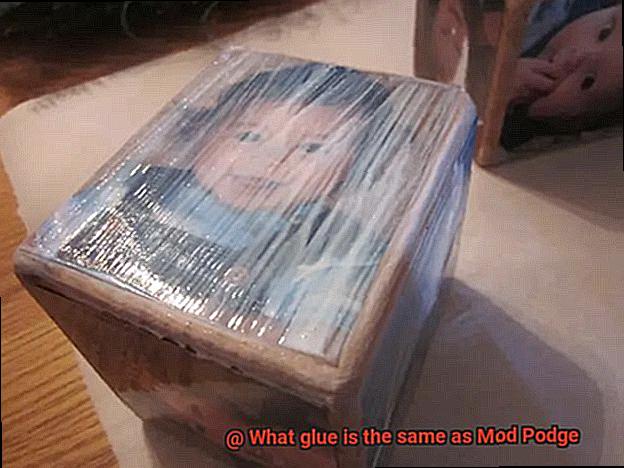
Identifying Suitable Alternatives:
When seeking alternatives to Mod Podge, several options are commonly suggested, including white glue, decoupage medium, or homemade mixtures. Each alternative possesses unique characteristics and similarities to Mod Podge. However, they may differ in terms of texture, finish, durability, or compatibility with specific materials. Testing these alternatives allows you to find the glue that best suits your project’s requirements.
The Importance of Testing:
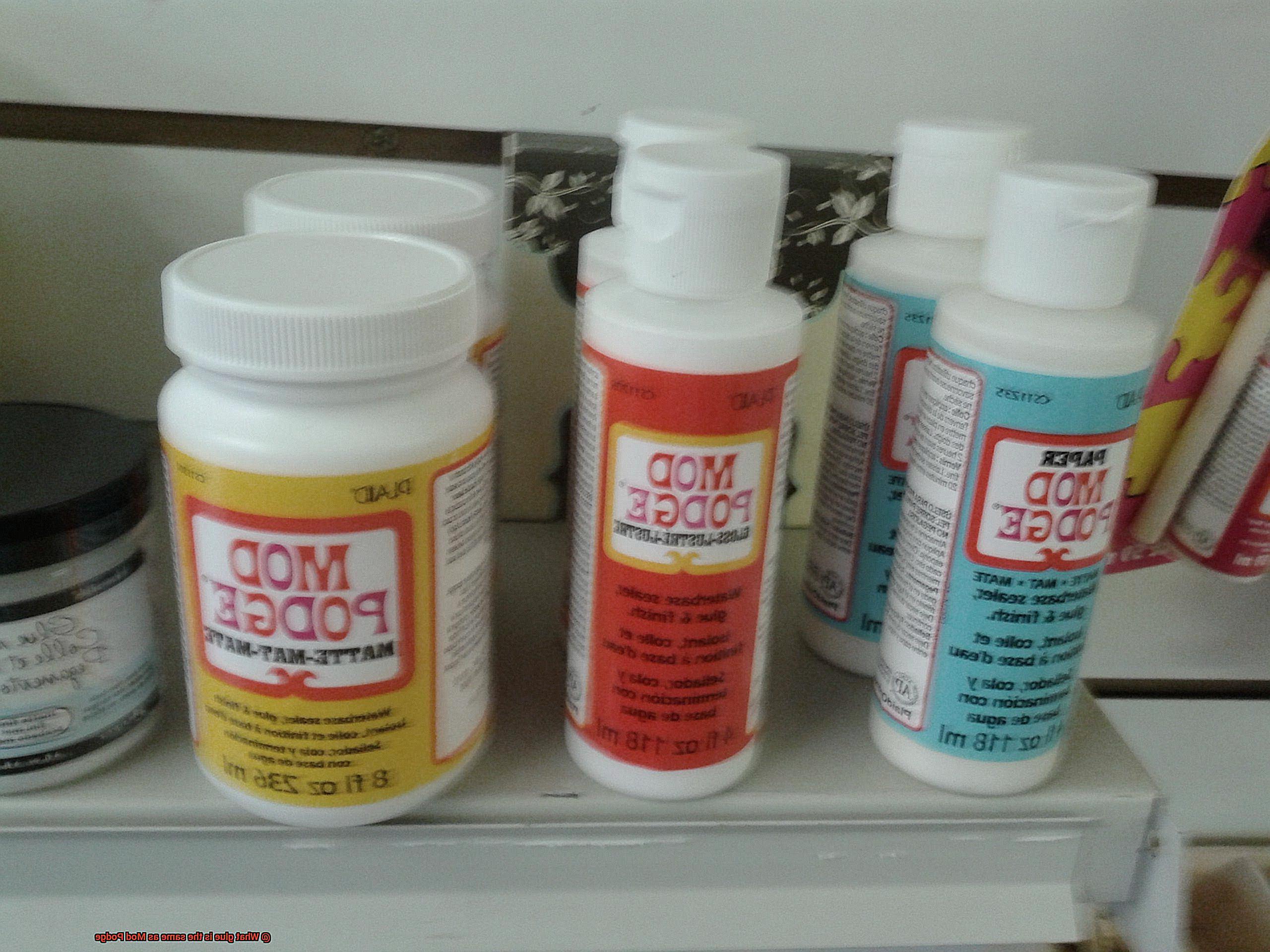
Testing alternative glues before use is essential for several reasons. Different glues can react differently when applied to surfaces or combined with other materials. By testing, you can assess factors such as adhesion strength, drying time, clarity, flexibility, and resistance to water or UV light. This process helps you avoid potential issues like poor adhesion or yellowing over time.
The Testing Process and Considerations:
To conduct proper glue testing, start by preparing test samples using representative materials commonly used in crafting projects. Apply a small amount of each alternative glue on separate samples, ensuring consistency in application thickness. Allow them to dry according to the recommended time and observe any changes in texture, clarity, adhesion, or flexibility. Test the samples under varying conditions like exposure to water, heat, or direct sunlight. Document your results for future reference and comparison.
Evaluating the Results:
Interpreting the test results effectively is crucial. Consider your specific project requirements and preferences when evaluating the performance of each alternative glue. Adhesion strength, resistance to yellowing or cracking over time, ease of application, and compatibility with different materials should be taken into account. Trust your judgment and experiment further if necessary.
Final Thoughts:
Testing alternative glues before use ensures the success of your crafting projects. While Mod Podge may be a popular choice, exploring different options can lead to unique finishes and effects. Each glue possesses its own characteristics and suitability for different projects. By testing and experimenting, you can find the perfect glue that meets your specific needs and preferences.
Pros and Cons of Using Alternatives to Mod Podge
Perhaps you need a specialized glue for your outdoor projects. Whatever your reason may be, exploring alternatives to Mod Podge can open up a world of possibilities. Let’s dive into the pros and cons of using these alternatives.
First, let’s talk about the advantages. One major benefit is cost. Mod Podge can be pricey, especially if you use it frequently. Alternatives are often more budget-friendly, allowing you to save money without compromising on quality.
Availability is another plus point. While Mod Podge may not be easily accessible in certain areas or countries, many alternatives are widely available online or in local stores. This convenience ensures that you can continue your crafting projects without any hassle.
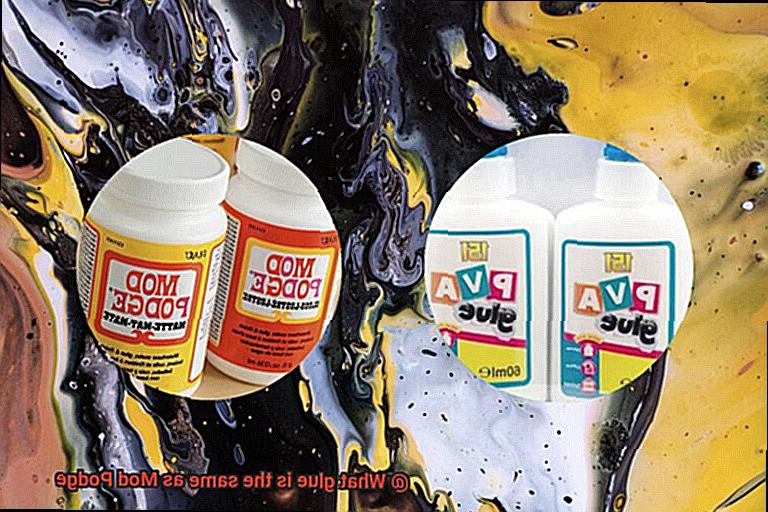
Some alternatives also offer specialized features. For instance, there are glues designed specifically for outdoor use, providing weather-resistant properties. This is perfect for projects that need extra durability or will be exposed to the elements.
However, there are some drawbacks to consider as well. Quality and performance can vary among alternative glues. While some may work just as well as Mod Podge, others may fall short in terms of adhesion and durability. It’s crucial to research and read reviews to ensure the alternative glue meets your specific needs.
Additionally, compatibility might be an issue. Mod Podge works well with various materials like paper, fabric, and wood. Not all alternatives may have the same versatility and effectiveness across different materials. Always check the product specifications and recommendations before starting a project.
Lastly, the user experience and familiarity factor should not be overlooked. Many crafters have been using Mod Podge for years and are accustomed to its application and drying time. Trying out an alternative glue may require some adjustment and experimentation to achieve desired results.
Tips for Choosing the Right Glue for Your Project
Choosing the right glue for your project is essential to ensure a successful outcome. With numerous options available, it’s important to consider factors such as type of glue, strength and durability, adhesion ability, temperature tolerance, and safety considerations. By evaluating these factors, you can select a glue that is suitable for your specific project needs.
Types of Glue:
There are various types of glue available, each formulated for specific materials and applications. For example, if you’re working with wood, a wood glue like carpenter’s glue or wood adhesive would be the best choice. For paper crafts or decoupage projects, a versatile adhesive like Mod Podge or white glue may be ideal. Consider the materials you’ll be working with and choose a glue that is compatible and specifically designed for those materials.
Strength and Durability:
The strength and durability of the glue are crucial considerations, especially if your project will be subjected to wear and tear or environmental factors. Some glues provide a strong bond that can withstand heavy loads or outdoor conditions. Others may offer more flexibility or repositioning capabilities. Assess the level of permanence you need and choose a glue that provides the desired strength and durability for your project.
Adhesion Ability:
The adhesion ability of the glue refers to how well it sticks to different surfaces. Some glues have better adhesion on porous materials like fabric or paper, while others work well on non-porous surfaces like metal or glass. Ensure that the glue you choose has good adhesion properties for the materials you’ll be working with to ensure a secure bond.
Temperature Tolerance:
Consider the temperature conditions your project will be exposed to. Some glues may lose their effectiveness or become brittle under extreme heat or cold. If your project will be subjected to temperature fluctuations or high temperatures, choose a glue that has a high-temperature tolerance to ensure its longevity and effectiveness.
Safety Considerations:
Always prioritize safety when choosing a glue for your project. Some glues emit strong fumes or require proper ventilation during application. Read the product label and follow any safety instructions provided. Consider using non-toxic or low VOC (volatile organic compound) glues, especially if you’re working on crafts with children or in an enclosed space.
Best Practices When Using an Alternative to Mod Podge
Or perhaps you’re itching to explore new horizons in your crafting adventures. Whatever the case may be, using an alternative to Mod Podge can be a game-changer. But before you plunge headfirst into the realm of alternative glues, there are a few best practices that will ensure your projects turn out fabulously.
First and foremost, when seeking an alternative glue, it’s crucial to find one with similar properties and characteristics to Mod Podge. Look for water-based options that dry clear and offer a glossy finish if that’s what you’re after. It’s all about locating that perfect match.
Once you’ve acquired your chosen glue, it’s time to prepare your surface. Cleanliness is key here, my friends. Ensure that the surface is clean and dry before applying any glue. Dirt, dust, or moisture can adversely affect the glue’s adhesion, and we certainly don’t want any mishaps, do we?
When it comes time to apply the glue, remember that less is more. Use a brush or sponge applicator to spread it evenly and smoothly. Applying too much glue can result in unsightly wrinkling or buckling of your paper or fabric, and nobody wants that. And speaking of paper or fabric, if you’re embarking on a decoupage project, apply a thin layer of glue onto the surface before placing your material on top. Smooth out any air bubbles or wrinkles with your fingers or a trusty brayer.
Now comes the most challenging part – patience. Allow that glue to dry completely before proceeding with any additional layers or finishes. This ensures a strong bond and prevents smudging or smearing of your precious artwork.
If you desire a protective topcoat for your project, consider utilizing a clear acrylic sealer or varnish. This will safeguard your masterpiece from moisture, UV rays, and general wear and tear. It’s like wrapping your creation in a cozy little blanket of protection.
Let’s not forget to conduct a small test by applying the alternative glue to a scrap piece of material or a discreet area. Different glues can yield different results, so it’s always wise to have a trial run before fully committing.
Proper storage is also crucial for glues. Keep your alternative glue in a cool, dry place to maintain its effectiveness and longevity. Extreme temperatures or direct sunlight can tamper with the glue’s mojo, so let’s avoid that.
Lastly, clean up any spills or excess glue immediately with warm soapy water. Once that glue dries, removing it is akin to extracting gum from your favorite pair of jeans – not fun.
Also Read: Is there a Mod Podge Alternative? – Glue Things
Common Mistakes When Using a Substitute for Mod Podge
While Mod Podge is a beloved and versatile crafting essential, there are alternative glues that can yield similar results. However, it’s crucial to steer clear of common mistakes that may hinder your crafting success. In this article, we’ll explore the pitfalls to watch out for when using a substitute for Mod Podge, ensuring your projects shine with perfection.
Neglecting Proper Surface Preparation:
One of the biggest blunders crafters make is neglecting to properly prepare their project surface before applying the substitute glue. Mod Podge adheres best to clean, dry, and smooth surfaces. Overlooking the removal of dust, dirt, or grease can lead to poor adhesion and an unsatisfactory finish. Take the time to ensure your surface is thoroughly cleaned and ready for crafting.
Choosing an Unsuitable Glue Type:
Not all glues are created equal. Mod Podge is a unique formulation that combines adhesive, sealer, and finish in one product. When substituting it, make sure you choose a glue that possesses similar properties. Opting for a glue lacking adhesive or sealer properties may weaken the bond or compromise the durability of your project. Research and select an appropriate alternative to achieve desired results.
Overusing or Underusing Glue:
Finding the right balance is key. Mod Podge boasts a distinct consistency that allows for easy application and spreading. Applying too much substitute glue can result in visible brush strokes or an uneven finish. Conversely, using too little may lead to poor adhesion. Follow the manufacturer’s instructions regarding application and apply thin, even layers for optimal results.
Rushing Drying Time:
Patience is a virtue in crafting. Allowing adequate drying time between coats or layers is crucial when using a substitute for Mod Podge. Hurrying this process may result in tackiness, smudging, or a sticky finish. Ensure each layer has dried completely before proceeding to the next step. Creating a beautiful project requires patience and attention to detail.
Ignoring Long-Term Durability:
Consider the longevity of your masterpiece. Mod Podge is renowned for its durability and ability to withstand wear and tear over time. When selecting a substitute glue, make sure it offers similar durability. Choosing a less durable alternative may result in a project that doesn’t stand the test of time. Give your creation the longevity it deserves by choosing the right glue.
AJ0k6Ngcu6s” >


